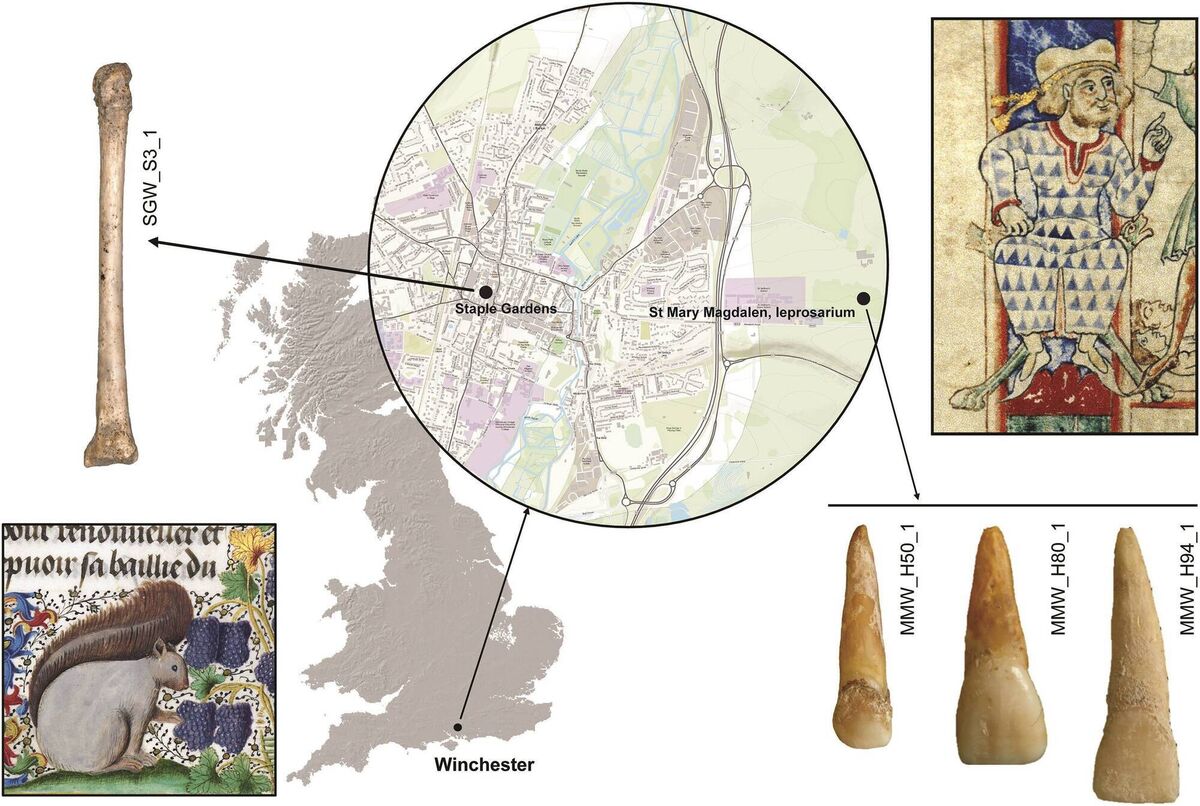Richard Collins: Research on red squirrels and leprosy links

Leprosy may have spread between red squirrels and humans between 10th and 11th century in England, research suggests. Modern red squirrels have been found to carry strains of the leprosy bacteria, but researchers said these rodents do not pose a threat to people here
Loneliness is the leprosy of the modern world — Mother Teresa
With the recent epidemics, there is renewed interest in animals as hosts of human diseases. Leprosy is one such... armadillos and chimps are carriers. A paper, just published, examines the possibility of human infection from contact with red squirrels, the oldest known leprosy host.
Medieval Squirrels Linked to Spread of Leprosy in Humans - great research by @SarahAInskip @Medieval_Badger @AletteBlom @AvanziCh and many others https://t.co/ajVPCiCaOZ #medieval
— Medievalists.net (@Medievalists) May 4, 2024
Skinners Row, in medieval Winchester, had "five skinners stalls and one tailor stall", the authors say. The city was "well known for its leprosarium and connections to the fur trade". Twenty-five human and 12 squirrel tissue samples, taken from two archaeological sites in the city, were analysed. Leprosy bacteria, similar to ones that affected humans, were identified in the squirrel samples. The disease spreads through physical contact. "Medieval iconography is replete with individuals wearing squirrel fur". Did people pick up leprosy from contact with squirrels, or did the squirrels get the infection from people?

Leprosy was widespread in Ireland. St Stephen’s Leper Hospital, which gave its name to the well-known Dublin park, was founded in the 14th Century. Gerard Lee, in his Leper Hospitals of Munster, says that place-names containing ‘martyr’, such as Castlemartyr, refer to ‘lepers’ — victims of the disease being regarded as martyrs. ‘Leperstown’, of racecourse fame, is still misspelt as ‘Leopardstown’.
According to Eileen Murphy of Queen’s University Belfast "Ireland is of particular interest in the history of leprosy as it was never part of the Roman world" — nor did it undergo "any significant occupation by later Anglo-Saxon settlers".

Two strains of leprosy were identified from human remains found in Dublin some years ago. Dated to the 10th and 13th centuries, both victims were foreigners, one of them Scandinavian — suggesting that the disease may have arrived here with the Vikings.
What role, if any, did squirrels play? In his (1970), UCC’s Fergus O’Rourke noted that the red squirrel "was extremely abundant in Ireland as is indicated by the records of taxes levied on skins for export". Exploitation was so relentless, however, that the species became virtually extinct here.
In the hope of reviving the pelt trade, introductions of British squirrels began in the early 19th Century. Charles Bethune Moffat, author of (1938), believed that Irish red squirrels are entirely descended from British ones. By the time he published his list of mammals, the species had recolonised every county. Had they brought leprosy with them?
The bacterium may still be present in our squirrels today but, fear not, there has been only one case of the disease here in more than 70 years. It was discovered in 2013 in a man who it is believed had become infected abroad as, while being treated here, he revealed that he had been treated for a similar problem 10 years earlier in Brazil. GP Conor Gallagher commented that such a case would be "more expected in the middle ages than on a busy morning in a County Meath clinic".
Even if you are unlucky enough to contract it, leprosy is treatable nowadays, Thanks to the African-American chemist Alice Ball, who developed an injectable oil extract, and the ground-breaking work of Corkman Vincent Barry at TCD, this dreadful scourge is no longer a threat. There are still, however, more than 200,000 new infections worldwide each year.
- Christian Urban et al. Ancient mycobacterium leprae genome reveals medieval English red squirrels as animal leprosy host. Current Biology. 2024








